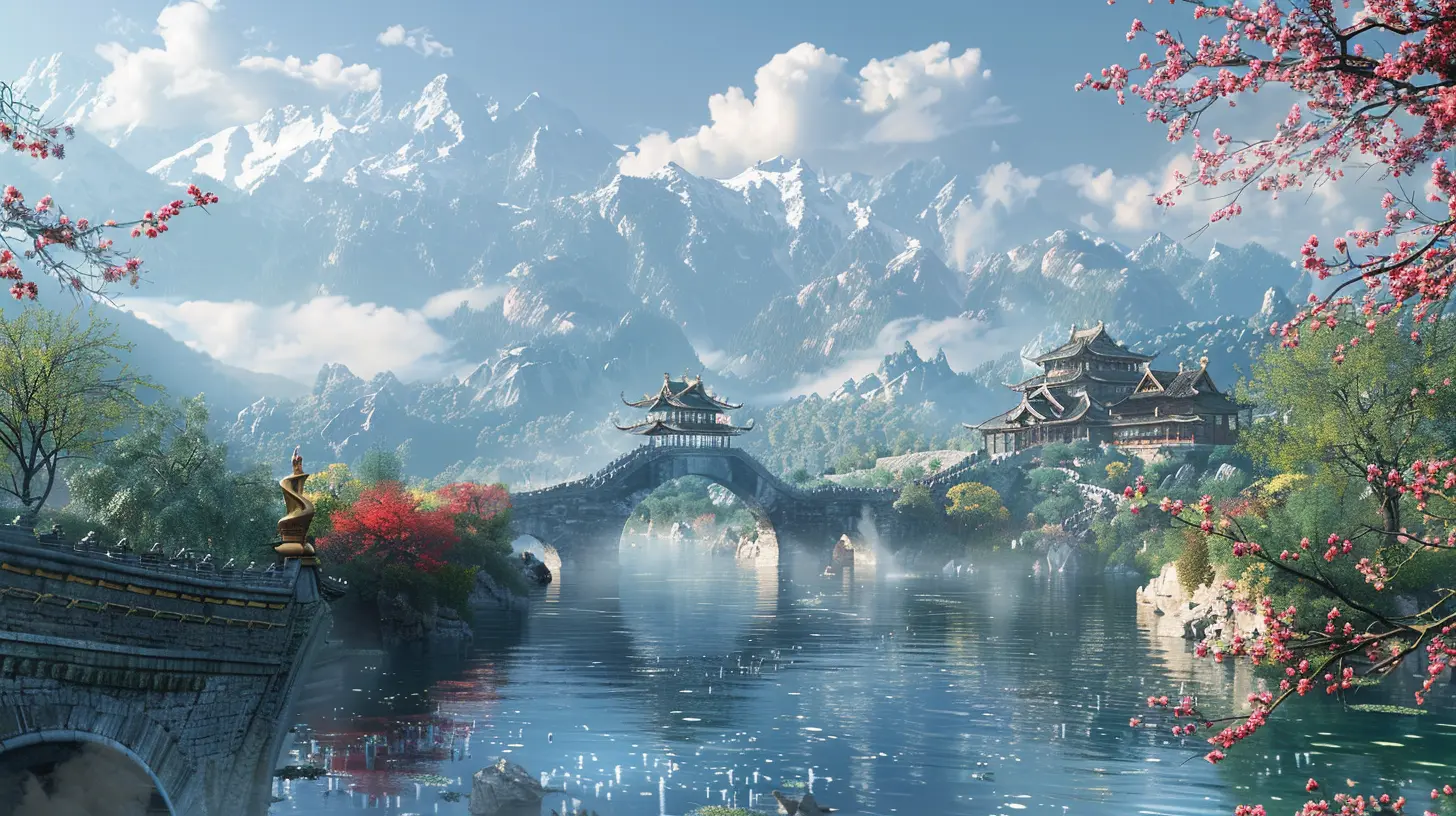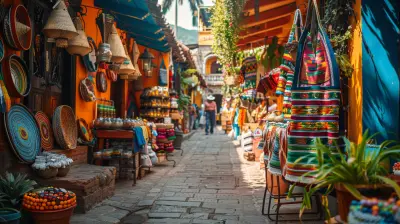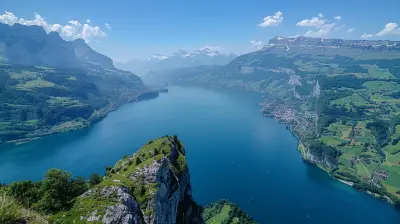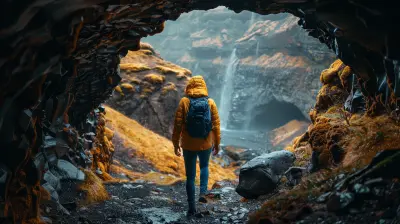5 February 2025
The Great Wall of China is one of those iconic landmarks that most people have heard of, but only a few understand its true history, purpose, and significance. Sure, you might know it as a massive structure snaking its way through the mountains, but this ancient marvel has so many secrets hidden within its walls. Whether you're planning a trip to China or you're just a curious soul, this article will serve as your gateway to discovering some of the most fascinating aspects of the Great Wall.
So, buckle up! It's time to unveil the secrets of the Great Wall of China – and trust me, it’s way more than just "the longest wall in the world."

A Quick Overview: What Is the Great Wall of China?
Before we dive into the nitty-gritty, let’s start with the basics. The Great Wall of China, or "Chángchéng" as it’s called in Mandarin, is a series of fortifications made of stone, brick, tamped earth, wood, and other materials. It was built along the northern borders of China to protect the Chinese states and empires from various nomadic groups and military incursions.Now, here's where it gets interesting: The Great Wall isn't just one continuous wall. In fact, it’s a collection of walls and fortifications built over several dynasties. The most famous sections were constructed during the Ming Dynasty (1368–1644).
But don’t worry – we’ll get into that a little later. Let's zoom in on some of the most jaw-dropping, eyebrow-raising details of the Great Wall.

1. Why Was the Great Wall of China Built?
This is probably the most common question, right? And it’s a good one because the answer is a bit complex. The Great Wall was primarily built for defense. Think about it: China was sandwiched between multiple nomadic tribes, like the Mongols, and the Great Wall served as a barrier (well, sort of) to keep them at bay.But it’s not just a defensive structure; the wall also had other purposes:
- Border Control: The wall helped regulate trade along the Silk Road, preventing smuggling, and ensuring that merchants followed the proper routes.
- Military Signaling: Watchtowers and smoke signals were used to send messages across vast distances.
- Immigration Control: It isn’t just modern-day countries that worry about who’s coming in. The Great Wall helped manage migrations both in and out of China.
Was It Effective, Though?
You may be wondering – if the wall was built for defense, did it actually work? Well, yes and no. There were times when the Great Wall stopped invasions, but there were also moments of grand failure (looking at you, Mongols). Genghis Khan and his army famously breached the wall in the 13th century by simply going around it or bribing corrupt officials.So, while the wall was impressive, it wasn’t foolproof.

2. How Long Is the Great Wall of China?
Okay, here's a fun fact that might blow your mind a little. The Great Wall isn’t just one length – it has been built, rebuilt, and extended over thousands of years. So, when people ask, “How long is the Great Wall of China?” the answer isn't as straightforward as you might think.The total length of all sections built over millennia is 13,170 miles (21,196 kilometers). To put that into perspective: that’s about half the circumference of the Earth.
You Won’t See the Entire Wall in One Trip!
Even if you’re a marathon runner, you could never hope to cover the entire wall in one go. Some sections are incredibly well-preserved, while others have eroded over time due to weather, human negligence, or even theft (yup, people stole bricks)! But the most popular parts to visit are within a short drive from Beijing, including:- Badaling: The most tourist-friendly, well-preserved section.
- Mutianyu: Quieter and surrounded by stunning scenery.
- Jinshanling: A bit farther out and more rugged, perfect for seasoned hikers.

3. Who Built the Great Wall of China?
The short answer: a LOT of people. The construction of the Great Wall, specifically the sections built during the Ming Dynasty, was an enormous communal task. Armies, peasants, prisoners, and even professionals like artisans and architects were enlisted to work on it.Life wasn’t exactly peachy for these workers. The conditions were brutal, and many of them died. In fact, the wall is sometimes referred to as "the world's longest cemetery" because so many laborers perished during its construction. Most workers were conscripted against their will, and working on the Wall was seen as a punishment worse than prison.
An Engineering Marvel
Setting aside the dark history for a moment, let’s acknowledge the sheer engineering brilliance that went into constructing the wall. We’re talking about thousands of miles of stone, brick, and earth, often built on steep mountains, cliffs, and deserts with basic technologies. Some sections were built using locally sourced materials like rammed earth or stone blocks, while others were constructed from bricks and tiles hauled from distant locations.4. Can You Really See It from Space?
This is probably one of the most talked-about myths surrounding the Great Wall of China. You’ve probably heard that it’s the only man-made structure visible from space, but unfortunately, that’s not true.While the wall is incredibly long, it’s also relatively narrow. Astronauts have confirmed that it’s quite difficult to spot the Great Wall from the International Space Station without aid, and it cannot be seen with the naked eye from the Moon.
But hey, don’t be too disappointed! Just because it’s not visible from outer space doesn’t mean it’s any less impressive from where we are down here on Earth.
5. What’s the Great Wall Like Today?
The Great Wall isn’t just a relic of the past – it’s still standing proudly today (well, for the most part). Many sections of the wall are now popular tourist spots, attracting millions of visitors yearly, but not every section is in great shape.In fact, it’s estimated that only about 30% of the original Ming Dynasty wall is well-preserved these days. Some parts have been taken over by nature, while others have deteriorated due to weather and lack of maintenance. What’s worse, parts of the wall were repurposed by villagers for building materials after the fall of the Ming Dynasty, leaving some stretches in ruin.
UNESCO World Heritage Status
Despite the wear and tear, the Great Wall was listed as a UNESCO World Heritage Site in 1987. This has helped bring attention and resources to the effort of preserving and restoring the Wall. Today, conservationists and historians are dedicated to maintaining the most iconic sections to ensure that future generations can continue marveling at this wonder.6. When Should You Visit the Great Wall?
Here’s the insider scoop if you’re planning a trip. The best times to visit the Great Wall are during the spring (April – May) and autumn (September – November) months. The weather is cooler, and the scenery is at its best with blooming flowers in the spring or fall foliage ablaze in vibrant reds and yellows.If you’re hoping to avoid the crowds, aim for a weekday and try to arrive early in the morning. If you’re up for a challenge, some sections of the wall offer opportunities for longer treks or even camping (Jinshanling and Jiankou, for example). Imagine waking up to the sunrise over a piece of ancient history – now that’s a once-in-a-lifetime experience!
7. The Myths and Legends Surrounding the Great Wall
No ancient structure would be complete without its fair share of legends, and the Great Wall is no exception. One of the most famous stories is that of Meng Jiangnü, a tragic tale of love and loss.According to the legend, Meng’s husband was conscripted to build the wall and tragically died due to the harsh conditions. When Meng heard the news, she traveled to the wall to mourn him. Her grief was so immense that her tears caused a section of the wall to collapse, revealing her husband’s bones.
Whether or not you believe the story, it’s a testament to the emotional weight this structure carries in Chinese culture.
Final Thoughts
The Great Wall of China is much more than just a tourist attraction or a textbook artifact. It embodies resilience, innovation, and the complex history of a nation that spans centuries. So next time you think about the Great Wall, remember that it’s not just a fence thrown up overnight. It's a complex, majestic, and sometimes tragic testament to human history and ingenuity.Whether you’re walking along its ancient pathways or just reading about it from the comfort of your own home, the Great Wall of China will never fail to captivate and inspire awe.









Kassidy McVicar
An awe-inspiring journey through history.
February 24, 2025 at 5:57 AM